Saitama is home to a wide range of bird species, making it an attractive destination for birdwatchers. With abundant wetlands, grasslands, forests, and mountains, birders of all levels of expertise can find something to enjoy in this Japanese prefecture.
From the iconic Japanese Bush Warbler to the rare Steller’s Sea Eagle, Saitama is home to a variety of unique and interesting species of birds. Whether you’re an experienced birder or just starting out, there’s something for everyone in Saitama.
1. Oriental Turtle Dove
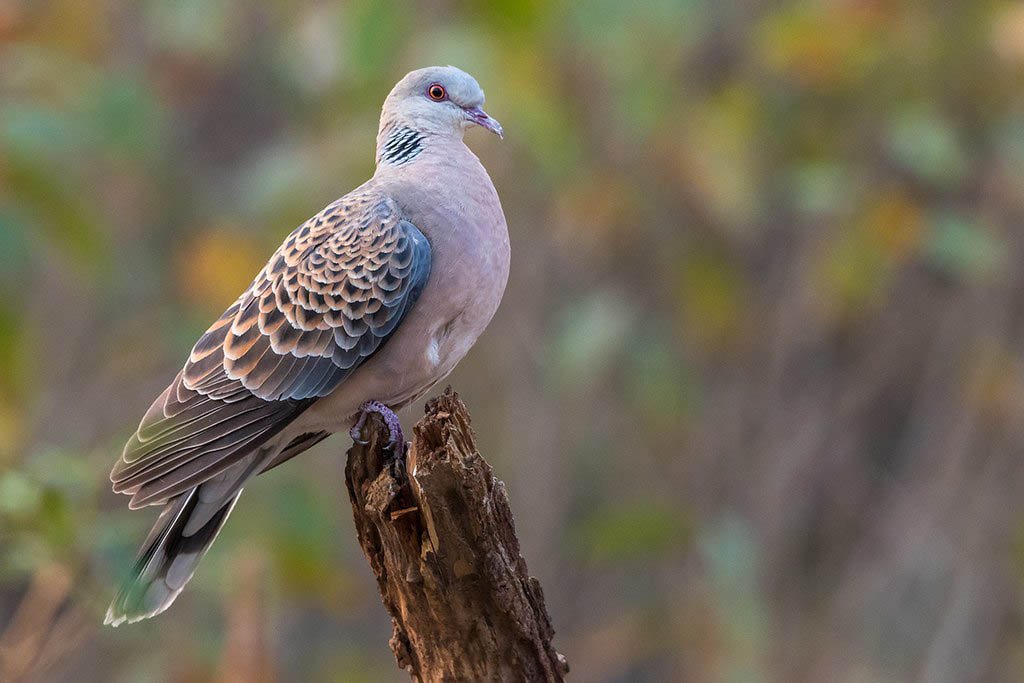
Source: Wikipedia
The Oriental Turtle Dove, or Rufous Turtle Dove, is a species of bird that belongs to the Columbidae family. It has a wide native distribution range, stretching from Central Asia to Japan.
This species is easily identifiable due to its distinct patterning of plumage, which has been divided into six named subspecies. These subspecies vary in their patterning, with some having more distinct markings than others.
The plumage of the Oriental Turtle Dove is generally a grey-brown color, with a black spot near the base of the neck and a chestnut-colored patch on the wings. The head is usually paler in color than the body, and the tail is darker than the body.
The bill is black, the legs and feet are brown-gray, and the eyes are yellow. The Oriental Turtle Dove is a medium-sized bird, measuring between 28 and 30 cm in length, and weighing around 150 grams.
It has a fast, direct flight with rapid wing beats, and can reach speeds of up to 50 mph. The species is also known for its distinctive call, which is a low, repetitive “bcoo-bcoo” sound.
The Oriental Turtle Dove is an important species in many Asian cultures, often being featured in art and literature. It is also a popular choice for release during traditional ceremonies.
| Kingdom | Animalia |
| Phylum | Chordata |
| Class | Aves |
| Order | Columbiformes |
| Family | Columbidae |
| Genus | Streptopelia |
| Species | S. orientalis |
2. Common Kingfisher
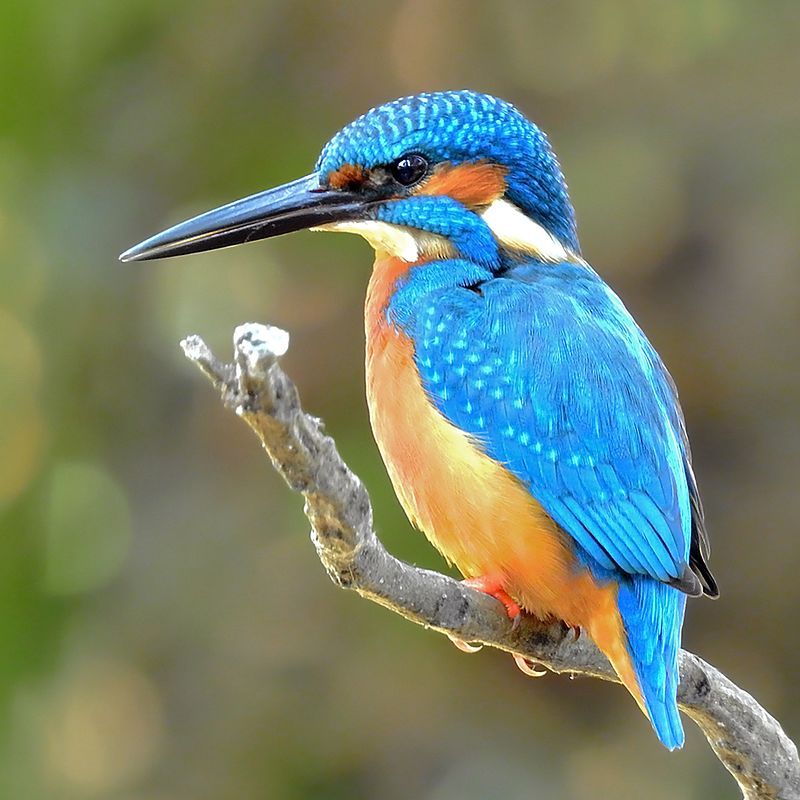
The Common Kingfisher, also known as the Eurasian Kingfisher and River Kingfisher, is a small bird that is found throughout Eurasia and North Africa. It is a colorful bird, usually having bright blue and orange feathers.
There are seven recognized subspecies of the Common Kingfisher, each with its own unique features and characteristics. The bird is a resident of much of its range, which means that it remains in the same area year-round.
However, it may migrate from areas where the rivers freeze in the winter, as this prevents them from accessing food or other resources.
The Common Kingfisher is an important species for the ecosystems it inhabits, as it helps to maintain a balance by eating fish, insects, and other invertebrates. As such, it is important to protect its habitats so that it can continue to thrive.
| Kingdom | Animalia |
| Phylum | Chordata |
| Class | Aves |
| Order | Coraciiformes |
| Family | Alcedinidae |
| Genus | Alcedo |
| Species | A. atthis |
3. Grey Heron
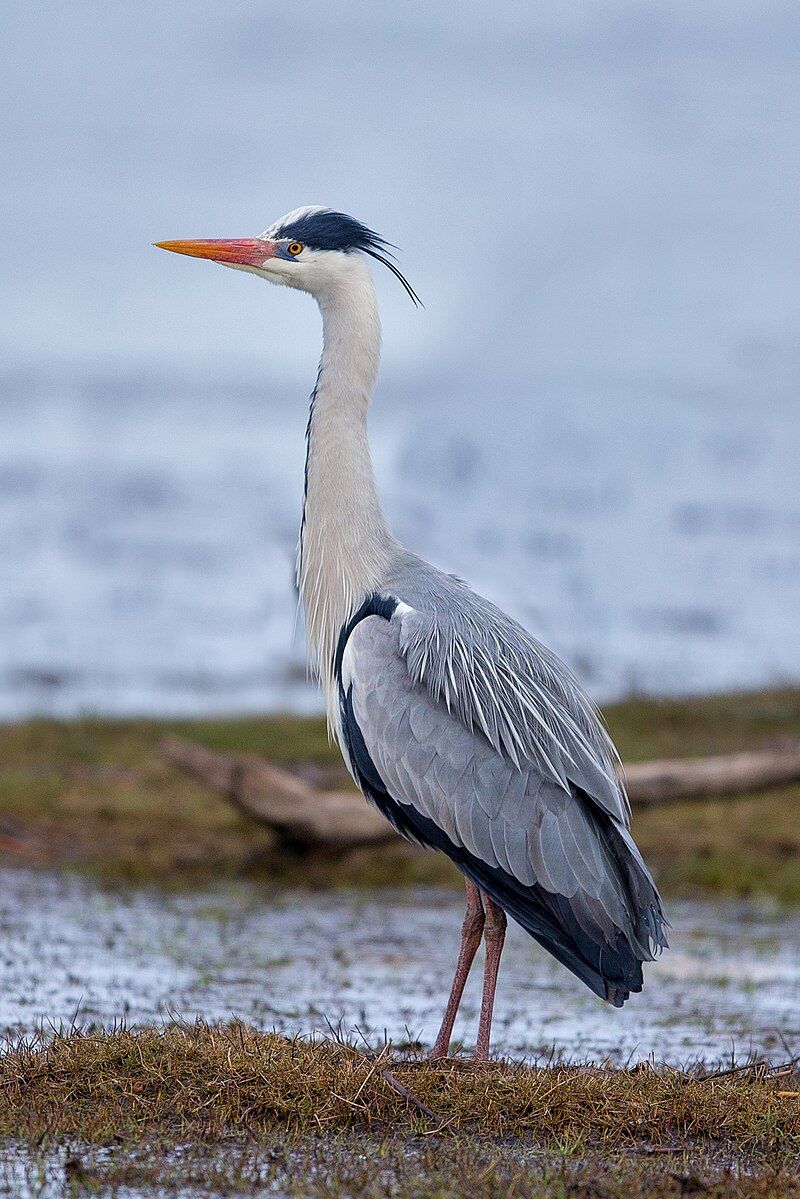
The grey heron is a common bird species found across temperate regions of Europe, Asia, and Africa. It belongs to the Ardeidae family, which contains numerous other heron species. Grey herons are long-legged wading birds that inhabit wetlands and other shallow water bodies.
They are usually found in a variety of habitats, from shallow wetlands and ponds to rivers and lakes. Grey herons are quite adaptable in terms of habitat and climate.
In many parts of their range, they are year-round residents, but some populations of birds from the more northern regions migrate south in autumn. This is usually done in order to seek out more favourable climates and find better food sources.
During the winter, grey herons may even be found in southern Europe, North Africa, and the Middle East. In terms of behaviour, grey herons can often be seen standing motionless in shallow water, patiently waiting for their prey to come close enough for them to strike.
They feed mainly on fish, amphibians, reptiles, and insects.
They sometimes hunt in groups, with one or two birds scaring prey into shallow water, where the others can more easily catch them. The grey heron is a fascinating bird species, with remarkable adaptations for survival in a range of habitats and climates.
Its ability to migrate long distances is also remarkable and helps it to survive in the face of changing environmental conditions.
| Kingdom | Animalia |
| Phylum | Chordata |
| Class | Aves |
| Order | Pelecaniformes |
| Family | Ardeidae |
| Genus | Ardea |
| Species | A. cinerea |
4. Eastern Spot-Billed Duck
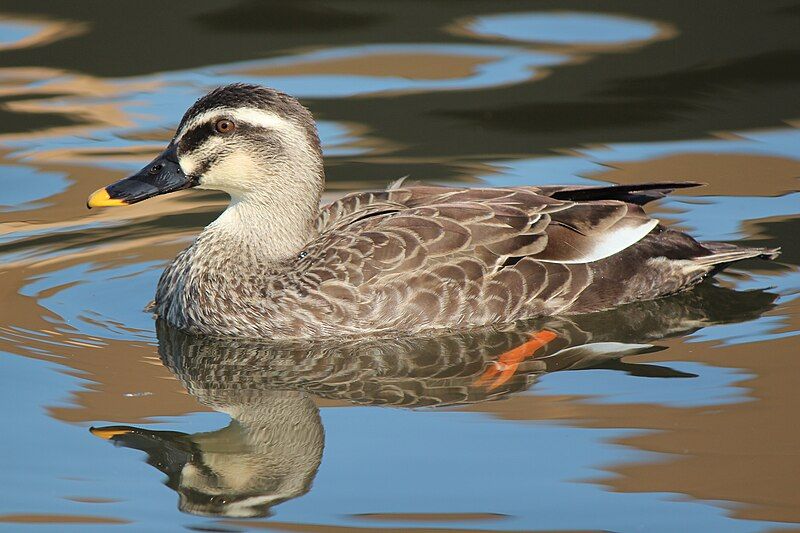
The eastern spot-billed duck, also known as the Chinese spot-billed duck, is a species of dabbling duck native to East and Southeast Asia. Until very recently, it was classified as a subspecies of the Indian spot-billed duck and was simply referred to as the spot-billed duck.
It gets its name from the yellow spot located on its bill, which is a distinguishing feature unique to this species. The eastern spot-billed duck is a medium-sized duck that typically measures between 18 and 20 inches in length.
It has a grayish-brown back, a chestnut-colored head, and a white belly. The bill is yellow and black, and the spot that gives the duck its name is located at the base of the bill. It has a long, pointed tail, and its feet are orange-brown.
Males and females look very similar, though males tend to be slightly larger. The eastern spot-billed duck is a social species that typically lives in flocks of between 10 and 40 individuals.
It feeds in shallow waters, where it eats a variety of aquatic plants, insects, and small fish.
It nests in dense vegetation near the water, and females typically lay a clutch of 8-10 eggs per season. The eastern spot-billed duck is a common species throughout its range and is not considered to be threatened.
It is found in wetlands, paddy fields, and open grasslands, and is found in China, Japan, Taiwan, and parts of Southeast Asia. Although it is hunted in some areas, it is not considered to be at risk of extinction.
| Kingdom | Animalia |
| Phylum | Chordata |
| Class | Aves |
| Order | Anseriformes |
| Family | Anatidae |
| Genus | Anas |
| Species | A. zonorhyncha |
5. Little Grebe
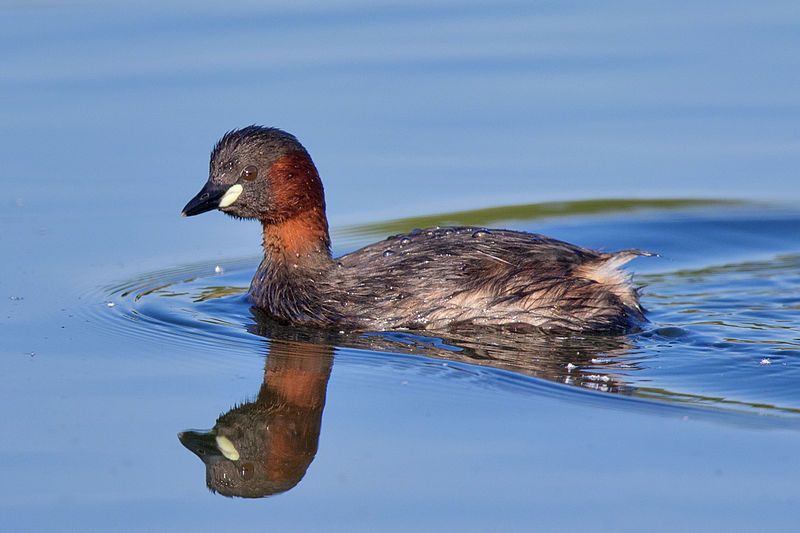
The little grebe, also known as a dabchick, is a small water bird belonging to the Grebe family. Its scientific genus name is derived from the Ancient Greek words, “takhus” which means “fast” and “bapto”, meaning “to sink under”.
The species name is Latin for “rufus” meaning “red” and “collis” meaning “necked”, both of which are derived from the Latin word “collum”, which means “neck”. This is likely due to the little grebe’s distinctive reddish-brown neck feathers.
The little grebe is a common sight in wetlands and other water bodies, where it hunts for small fish and insects. It is an excellent swimmer and diver, able to quickly submerge itself under the water with its short wings and legs.
Its fast swimming speed and agility make it a difficult target for predators.
| Kingdom | Animalia |
| Phylum | Chordata |
| Class | Aves |
| Order | Podicipediformes |
| Family | Podicipedidae |
| Genus | Tachybaptus |
| Species | T. ruficollis |
6. Eurasian Moorhen
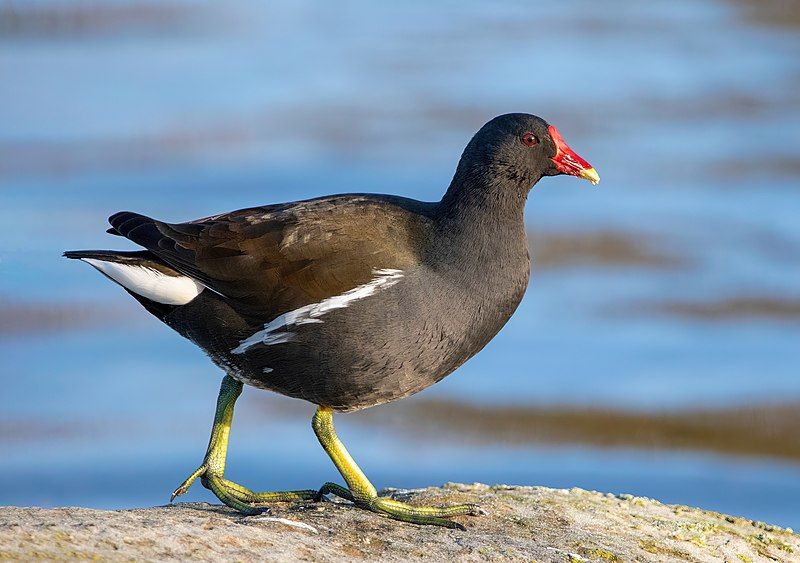
The Common Moorhen, also known as the Waterhen or Swamp Chicken, is a species of bird belonging to the rail family. It is widely distributed across the Old World, occurring in many parts of Europe, Asia, and Africa.
This species of bird prefers to make its home around well-vegetated wetlands, such as marshes, ponds, and canals. It is usually found in groups, often foraging in shallow water or on the shore. The Common Moorhen has a distinct black-and-white striped head and long green legs.
Its plumage is mostly brown with lighter patches on its back, wings, and tail. It feeds mainly on aquatic vegetation and small invertebrates, and will occasionally take small fish and frogs. The Common Moorhen is a vocal species and has a variety of loud call notes.
It is also known to produce a distinctive “chuck-chuck-chuck” sound. The Common Moorhen is a relatively common species, and its population is thought to be stable.
| Kingdom | Animalia |
| Phylum | Chordata |
| Class | Aves |
| Order | Gruiformes |
| Family | Rallidae |
| Genus | Gallinula |
| Species | G. chloropus |
7. Great Egret
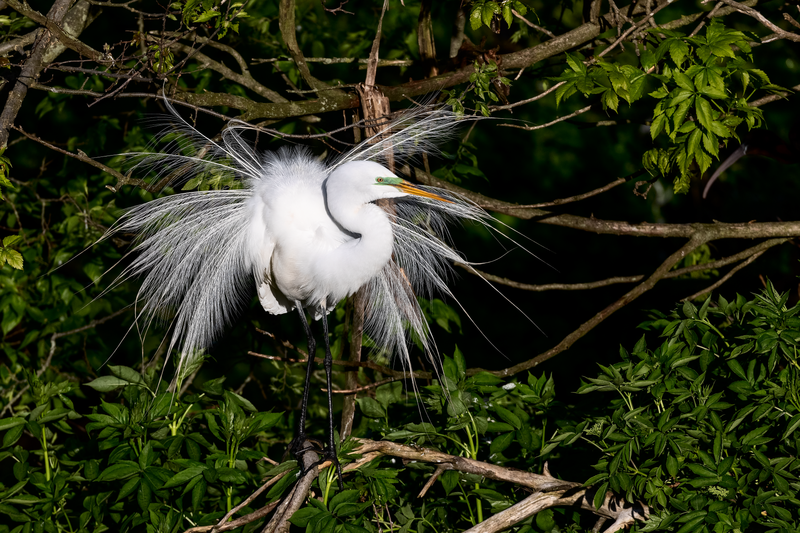
The great egret is a species of heron that has become widespread across the world, with four distinct subspecies present in Asia, Africa, the Americas, and southern Europe.
In recent years, populations of this species have been observed in more northerly areas of Europe as well, suggesting that its range is gradually expanding.
This species is also known as the common egret, large egret, great white egret, or great white heron, and is generally characterized by its large size and white plumage.
The great egret is a long-legged wading bird that inhabits wetlands, marshes, and other shallow aquatic habitats.
It has a long slender neck and yellow bill and typically hunts for fish and other small aquatic animals by standing still in the shallow waters and waiting for prey to come within striking distance.
It is an important species in many regions, as its presence is indicative of a healthy wetland habitat.
| Kingdom | Animalia |
| Phylum | Chordata |
| Class | Aves |
| Order | Pelecaniformes |
| Family | Ardeidae |
| Genus | Ardea |
| Species | A. alba |
8. Black Kite
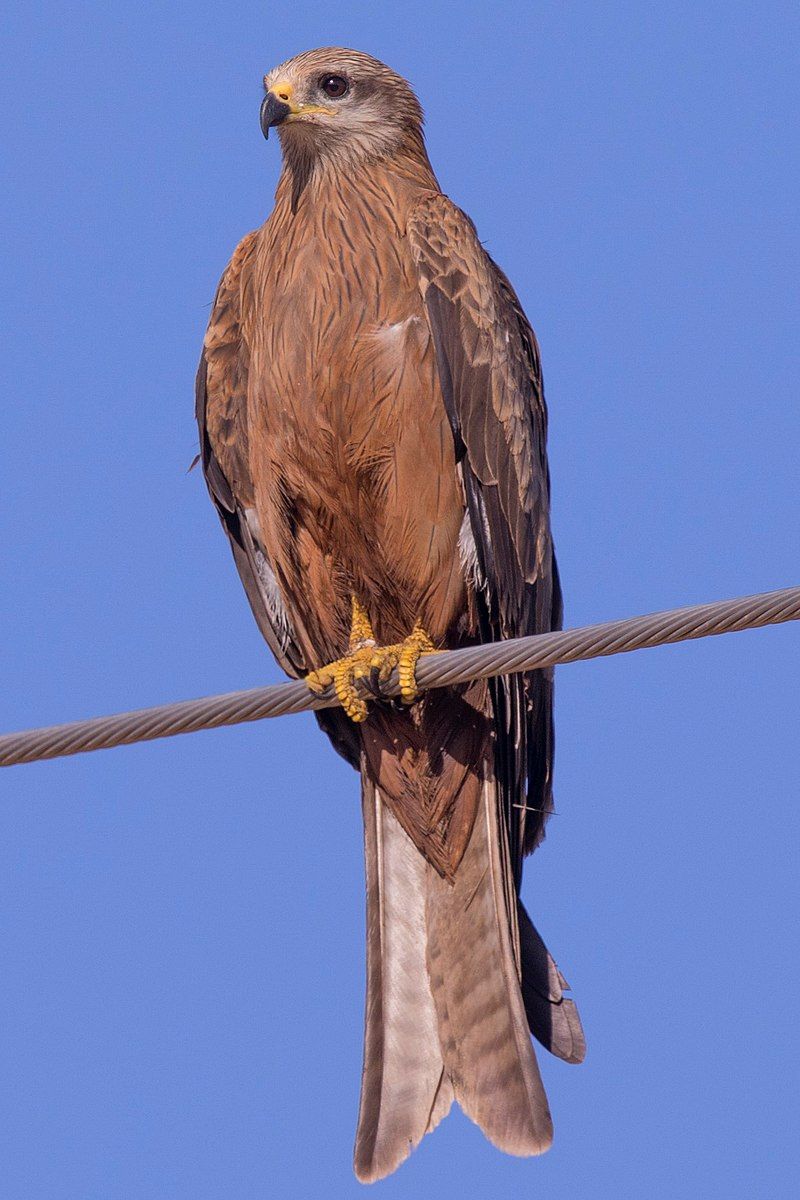
The black kite is a species of bird of prey belonging to the family Accipitridae. This family also contains many other raptors that hunt during the day. According to recent studies, the black kite is believed to be the most common species of Accipitridae in the world.
Unfortunately, some populations of the black kite have experienced a decrease in numbers or have seen their populations fluctuate. This could be due to a variety of factors, such as habitat destruction, hunting, and other environmental pressures.
It is important that conservationists continue to monitor the black kite’s populations and take measures to protect this species and its habitats.
| Kingdom | Animalia |
| Phylum | Chordata |
| Class | Aves |
| Order | Accipitriformes |
| Family | Accipitridae |
| Genus | Milvus |
| Species | M. migrans |
9. Brown-Eared Bulbul
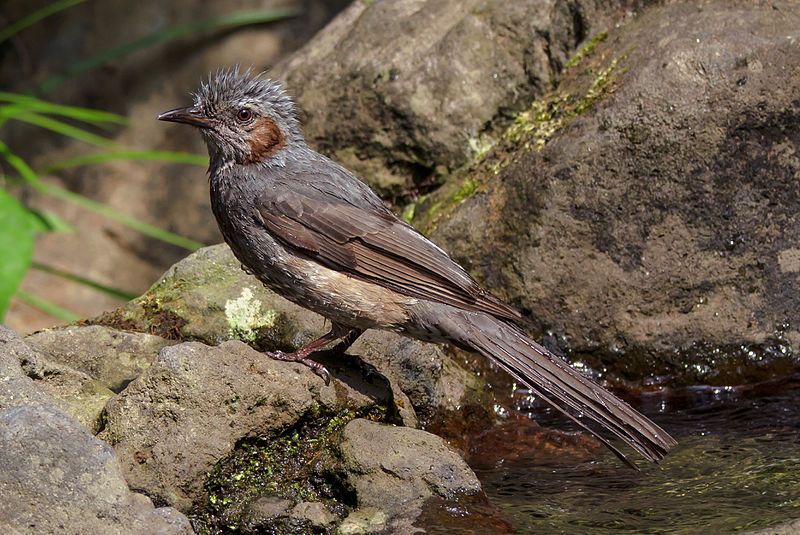
The brown-eared bulbul is a species of bird belonging to the bulbul family, which is found throughout eastern Asia. This species is medium-sized, with distinctive brown ears, making it a very recognizable bird.
It is abundant in the northern parts of its range, which stretches from the southern parts of Sakhalin in Russia, all the way to the northern Philippines.
This species is considered to be one of the most common birds in the region and can be seen in a variety of habitats such as forests, woodlands, and even gardens. It is an omnivorous species, feeding on a wide range of food items, including fruits, seeds, and insects.
Its song is a combination of whistles and warbles, and it is also known for its ability to imitate other birds’ songs.
| Kingdom | Animalia |
| Phylum | Chordata |
| Class | Aves |
| Order | Passeriformes |
| Family | Pycnonotidae |
| Genus | Hypsipetes |
| Species | H. amaurotis |
10. Great Cormorant
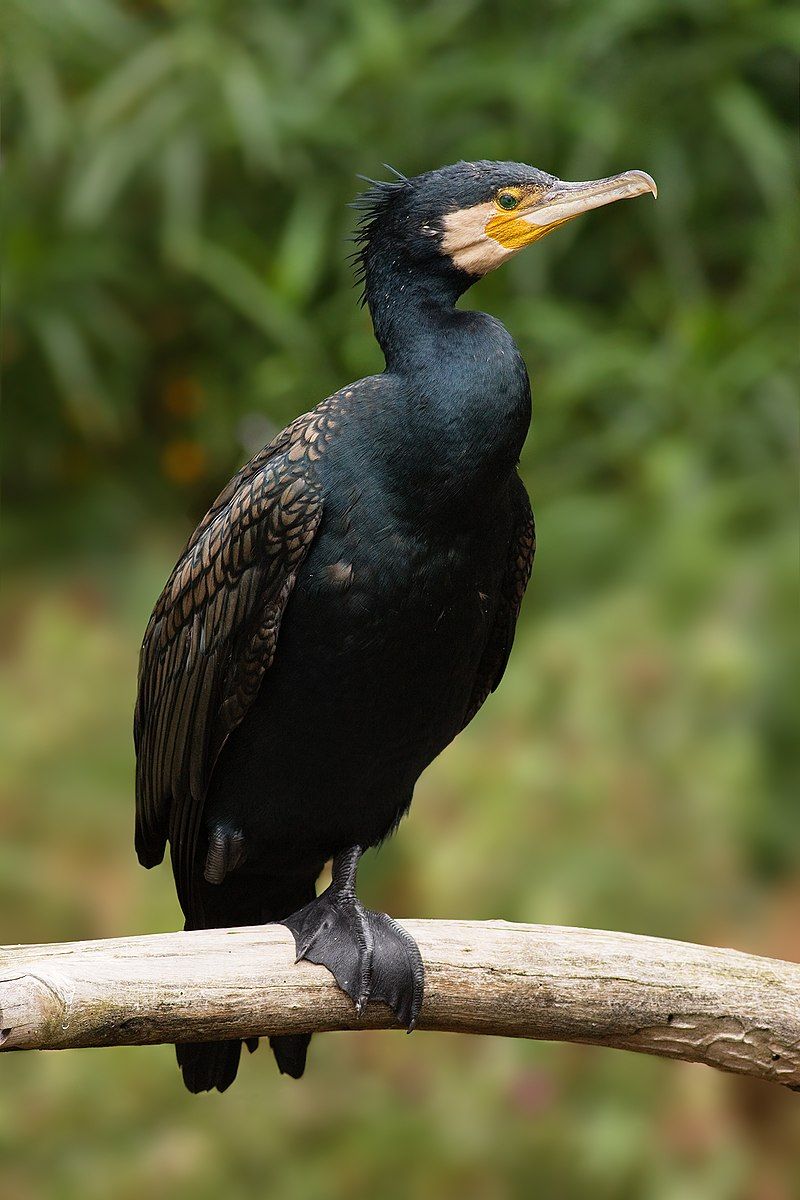
The great cormorant is a species of seabird that can be found across the Northern Hemisphere and in countries such as New Zealand, Australia, and India.
It is known by many different names, such as the black shag or kawau in New Zealand, the great black cormorant in the Northern Hemisphere, the black cormorant in Australia, and the large cormorant in India.
The great cormorant is a species of the larger cormorant family of seabirds, which also includes species like the pied cormorant, the red-faced cormorant, and the pelagic cormorant. The great cormorant is a large seabird, with a wingspan of up to 1.5 meters.
It has black feathers, with a greyish-white patch on the chest. It has a long, hooked bill, and yellow feet and legs. It feeds mainly on fish, but will also take crustaceans and other aquatic animals. The great cormorant is a social species, and can often be seen in large flocks.
It is known for its spectacular diving ability and can reach depths of up to 30 meters while searching for food. It nests on cliffs, ledges, or in trees, and usually lays three to four eggs.
The chicks are fed by both parents and can take up to six weeks to fledge. The great cormorant can be found in many different habitats, from rocky coastlines to estuaries, lakes, and rivers.
It is a very adaptable species and is generally not threatened, although its numbers have declined in some areas due to overfishing and habitat destruction.
| Kingdom | Animalia |
| Phylum | Chordata |
| Class | Aves |
| Order | Suliformes |
| Family | Phalacrocoracidae |
| Genus | Phalacrocorax |
| Species | P. carbo |
11. Great Crested Grebe
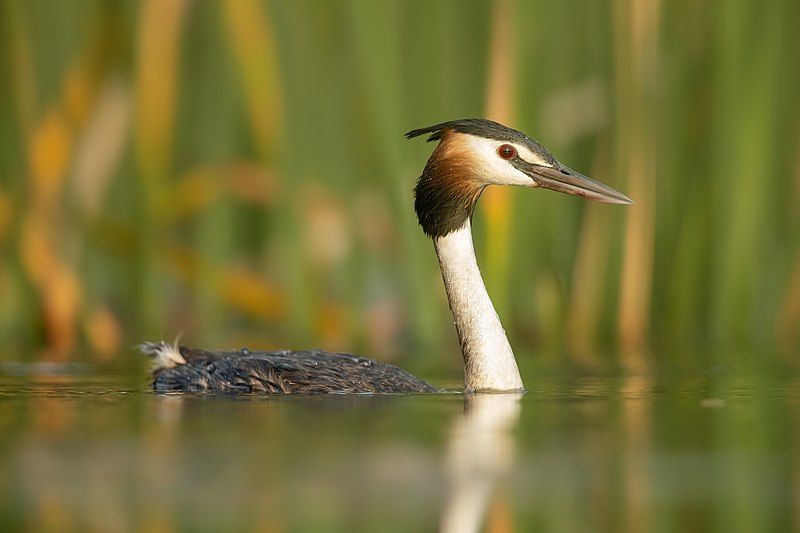
The great crested grebe (Podiceps cristatus) is an elegant freshwater bird found in Europe, Asia, and North America. It is a member of the Grebe family of water birds, which includes many species of diving birds.
The great crested grebe is known for its elaborate mating ritual, which is truly a sight to behold. During the mating season, the male great crested grebe will start to build a nest out of reeds and grass.
Once the nest is complete, the male will begin to perform a courtship dance, which includes flicking his wings, shaking his head, and spinning around in circles.
This display is intended to impress the female and show her that he is ready to mate. The female responds to the male’s display by performing her own courtship dance. This includes shaking her head and body, and swimming in circles around the male.
When the female is ready to mate, she will lay her eggs in the nest that the male has built. After the eggs are laid, the male will stand guard over the nest and protect it from predators. He will also help keep the eggs warm by preening them and occasionally turning them over.
Once the eggs hatch, the parents will work together to care for the chicks. The great crested grebe is an impressive bird, and its mating ritual is one of the most elaborate among water birds. It is a sight to behold and an important part of the Grebe family’s life cycle.
| Kingdom | Animalia |
| Phylum | Chordata |
| Class | Aves |
| Order | Podicipediformes |
| Family | Podicipedidae |
| Genus | Podiceps |
| Species | P. cristatus |
12. Bull-Headed Shrike
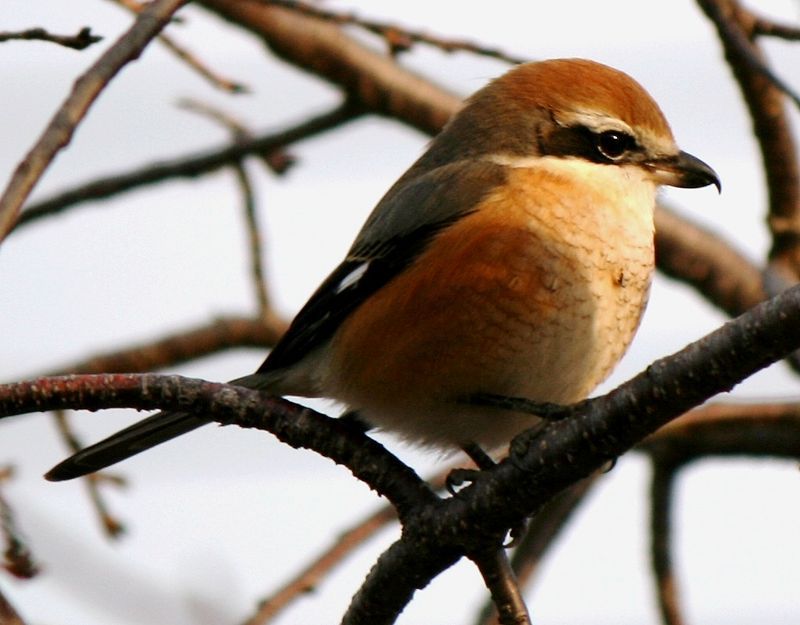
The bull-headed shrike is a species of passerine bird native to eastern Asia. It is part of the shrike family, Laniidae, and is approximately 19-20 cm in length.
The male of this species has a distinctive appearance, with a brown crown on the head, a white eyebrow, and a black mask. The back is grey-brown, while the wings are dark with a white patch.
This species is found in a variety of habitats, including open woodland, grassland, and shrubland. They feed mainly on insects, such as grasshoppers and lizards, but they also eat small rodents, snakes, and eggs.
They are territorial and often hunt cooperatively in pairs or small groups. They also engage in a distinctive display of singing and chasing each other in the air. They are an important species in the food web of their habitat, and essential for the balance of the ecosystem.
| Kingdom | Animalia |
| Phylum | Chordata |
| Class | Aves |
| Order | Passeriformes |
| Family | Laniidae |
| Genus | Lanius |
| Species | L. bucephalus |
13. White Wagtail
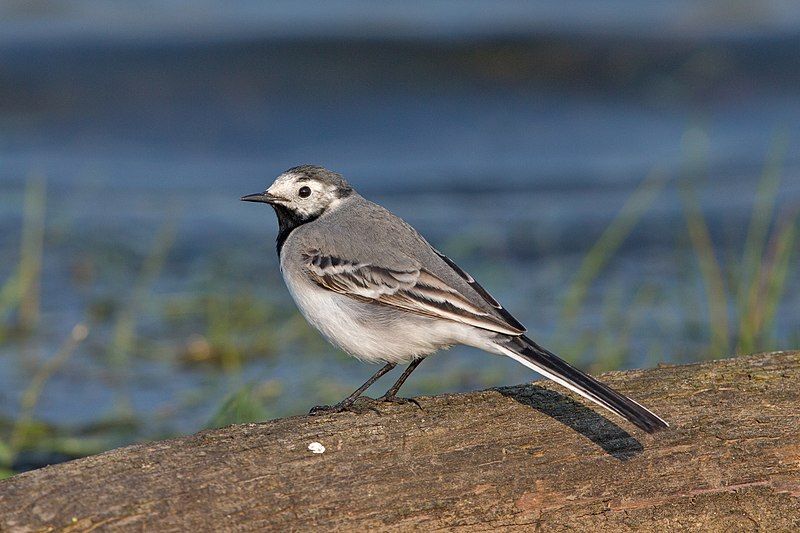
The white wagtail is a small, passerine bird found in the family Motacillidae. This family also includes other species such as pipits and longclaws. The white wagtail can be found in many parts of Europe, the Asian Palearctic, and in some areas of North Africa.
It also has a foothold in Alaska, but is much less prevalent there than in other regions. The white wagtail is a ground-feeding bird, often seen foraging in open fields and along roadsides.
They are known for their distinctive, jerky tail movements, which they use to attract insects from the ground. As a result, they are often referred to as “wagtails”.
The white wagtail is also a common sight in gardens and other urban environments and is sometimes seen nesting in window boxes or on rooftops. The white wagtail is a migratory species, with some populations traveling south for the winter.
The birds form large flocks during migration, which can often be seen in the evening sky. This species is also known to be a vocal bird, with its loud, high-pitched calls often heard in the early morning or late evening.
Overall, the white wagtail is a common and well-known species, with a wide distribution range. This species is a valuable part of many ecosystems, thanks to its insect-eating habits and its contribution to the local birdlife.
| Kingdom | Animalia |
| Phylum | Chordata |
| Class | Aves |
| Order | Passeriformes |
| Family | Motacillidae |
| Genus | Motacilla |
| Species | M. alba |
14. White-Cheeked Starling
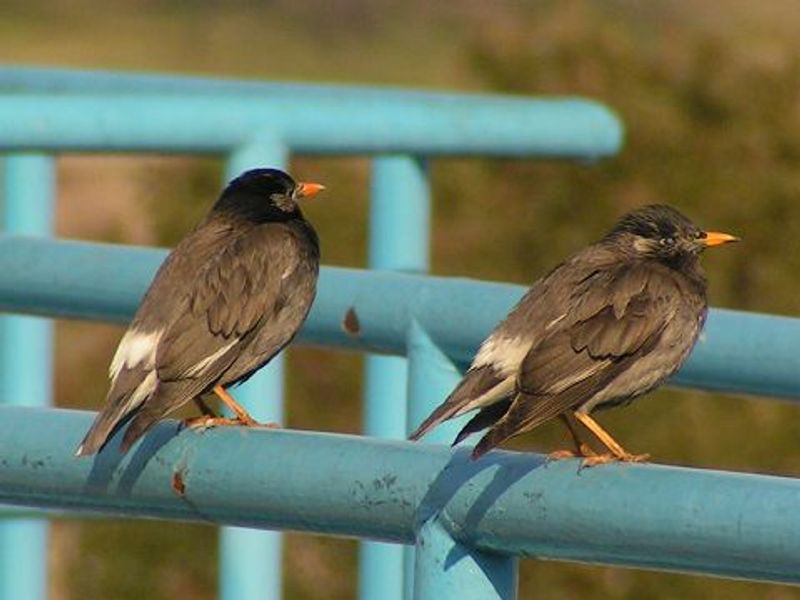
The white-cheeked starling or grey starling is a type of bird which belongs to the starling family. It is native to eastern Asia and is quite common in this region. It is a well-known bird and is easily identifiable due to its distinct features.
It is usually classified under the genus Spodiopsar, an indicator of its uniqueness among other species of birds. The white-cheeked starling has a distinct appearance, with its greyish-black feathers and white patches on its cheeks.
Its beak is yellowish-orange in color and its legs are dark. It has a unique call, which sounds like loud chattering. Its diet consists mainly of insects, berries, and grains. The white-cheeked starling is a social bird, and it usually forms large flocks.
It is known to roost in trees or on the ground. It is also known to be very vocal, and its loud calls often attract other birds. In its native range, the white-cheeked starling is a popular bird among locals.
It is often seen in gardens and parks, and it is not uncommon to see people feeding it. It is also a popular pet, as it is known to be quite tame. Overall, the white-cheeked starling is a unique and interesting bird.
Its distinct features, social behavior, and popularity make it an important part of the Eastern Asian ecosystem.
| Kingdom | Animalia |
| Phylum | Chordata |
| Class | Aves |
| Order | Passeriformes |
| Family | Sturnidae |
| Genus | Spodiopsar |
| Species | S. cineraceus |
15. Little Egret
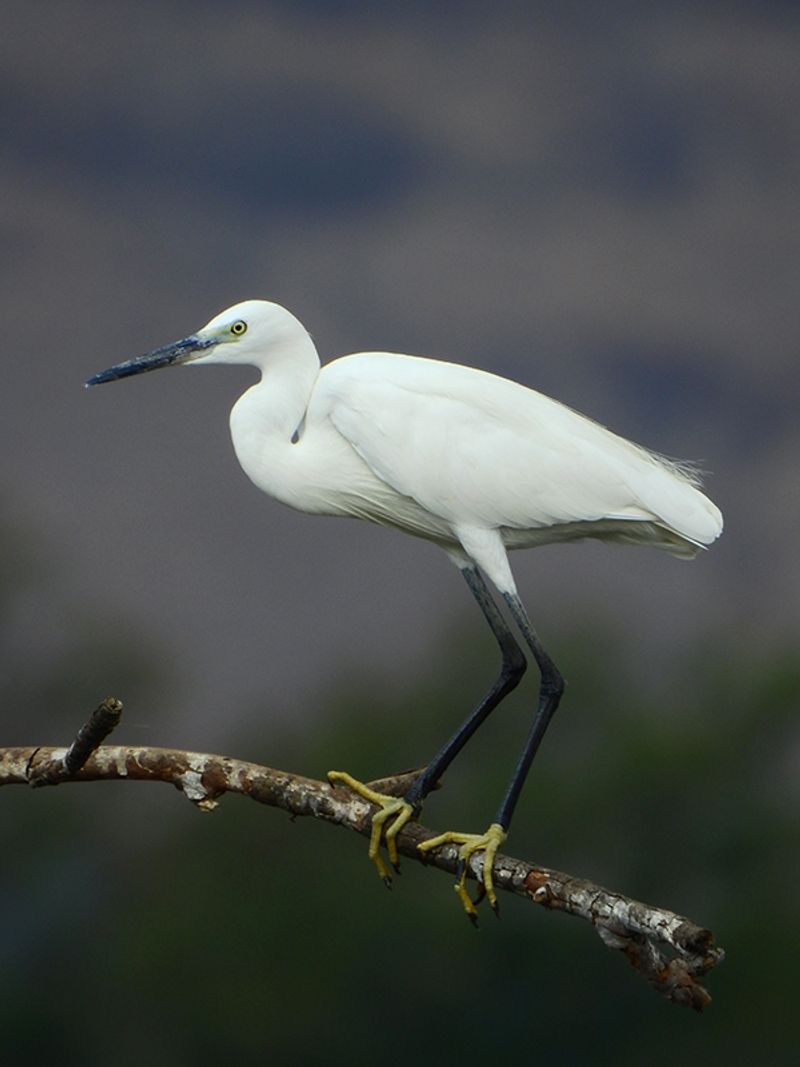
The little egret is a species of small heron that belongs to the family Ardeidae. It is a white bird with a slender black beak, long black legs and, in the western race, yellow feet.
As an aquatic bird, it can be found in both shallow water and on land, where it feeds on a variety of small creatures. The little egret has a long and slender neck, which it uses to search for prey in the water with its sharp eyesight.
Its long legs help it wade through shallow waters with ease. Its yellow feet are an adaptation to its western habitat, allowing it to better grip and maneuver in the water and on land.
As an omnivore, the little egret will consume a variety of small creatures, both in water and on land. It can be seen searching for food in shallow waters, where it uses its beak to capture prey. On land, it may eat insects, worms, or small rodents.
The little egret is an important species that helps to keep aquatic and land ecosystems balanced.
| Kingdom | Animalia |
| Phylum | Chordata |
| Class | Aves |
| Order | Pelecaniformes |
| Family | Ardeidae |
| Genus | Egretta |
| Species | E. garzetta |
16. Pygmy Woodpecker
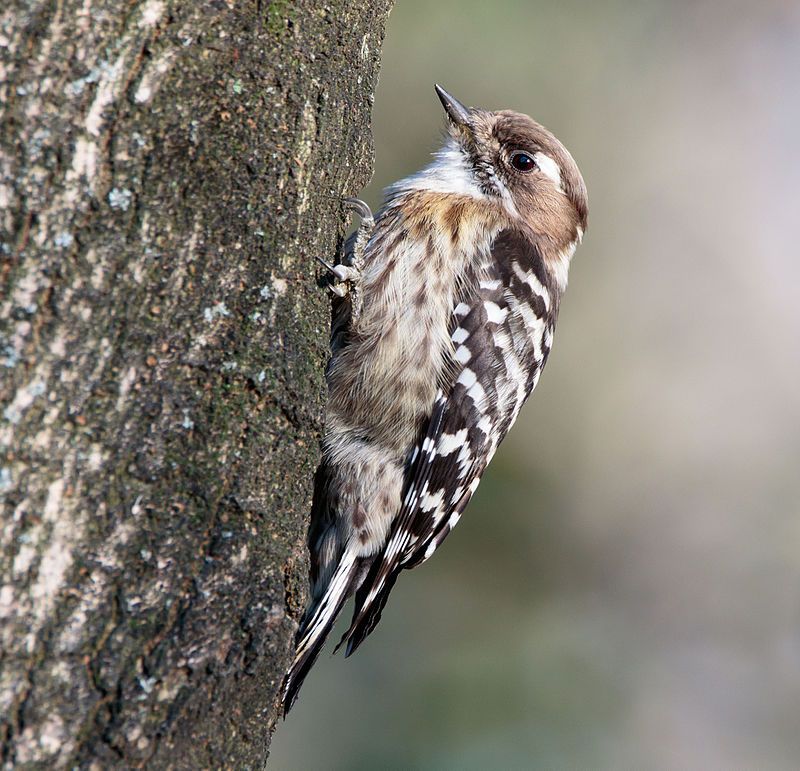
The Japanese Pygmy Woodpecker is a species of woodpecker, native to the forests of Russia, China, Korea and Japan. It can typically be found in both coniferous and deciduous forests.
It is classified in the genus Dendrocopos or Picoides, and is a small bird, usually around 4 inches in length.
Its upper parts are generally a shade of brown, while its underparts are a lighter white or buff color. The bird feeds mainly on insects but also consumes fruits and berries. It is a solitary bird, usually living alone or in pairs, and foraging for food during the day.
It tends to make its home in tree cavities, digging out its own nest or using an existing cavity.
The bird is known to be a vocal species, often chirping or drumming on the dead wood of trees. The Japanese Pygmy Woodpecker is a relatively common species, but its population has declined somewhat in recent years.
This is due to a variety of factors, including deforestation, habitat destruction and predation from other animals. Conservation efforts have been put in place to protect the species, and it is now listed as Least Concern by the IUCN.
| Kingdom | Animalia |
| Phylum | Chordata |
| Class | Aves |
| Order | Piciformes |
| Family | Picidae |
| Genus | Yungipicus |
| Species | Y. kizuki |
17. Eurasian Coot
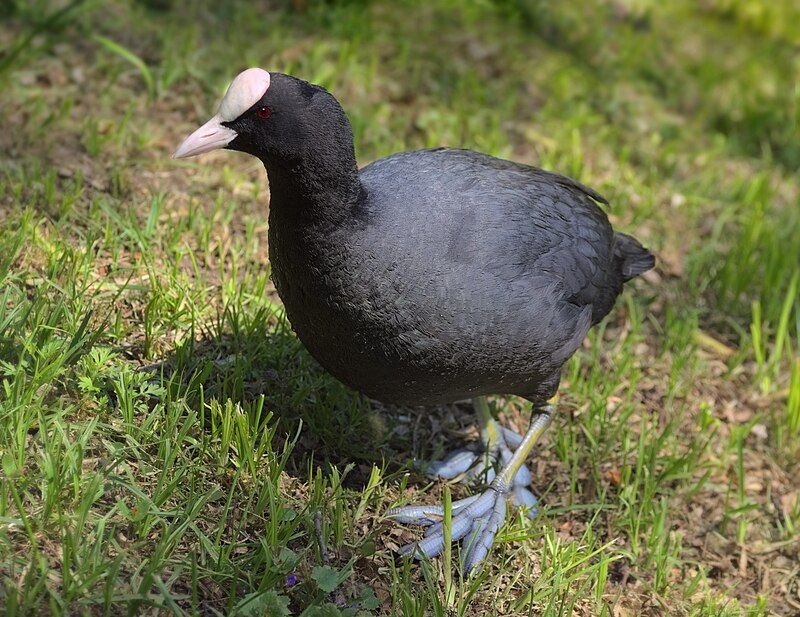
The Eurasian coot is a bird species of the Rallidae family which is found in multiple regions across the world, including Europe, Asia, Australia, New Zealand and parts of North Africa. It is also known as the common coot or Australian coot.
This species is characterized by its striking appearance, with a slaty-black body, a glossy black head and a white bill that has a white frontal shield. The Eurasian coot is a medium-sized bird, typically reaching a length of 35-45 cm and a wingspan of 75-90 cm.
The bird predominantly feeds on aquatic vegetation and is known to be an excellent swimmer and diver. It is also an adept flyer, able to take off from the water with ease.
The Eurasian coot is a highly social bird, often seen congregating in large flocks that may contain hundreds of individuals. This species is also known to be relatively vocal, with its distinctive call being a loud “crex-crex”.
| Kingdom | Animalia |
| Phylum | Chordata |
| Class | Aves |
| Order | Gruiformes |
| Family | Rallidae |
| Genus | Fulica |
| Species | F. atra |
18. Dusky Thrush
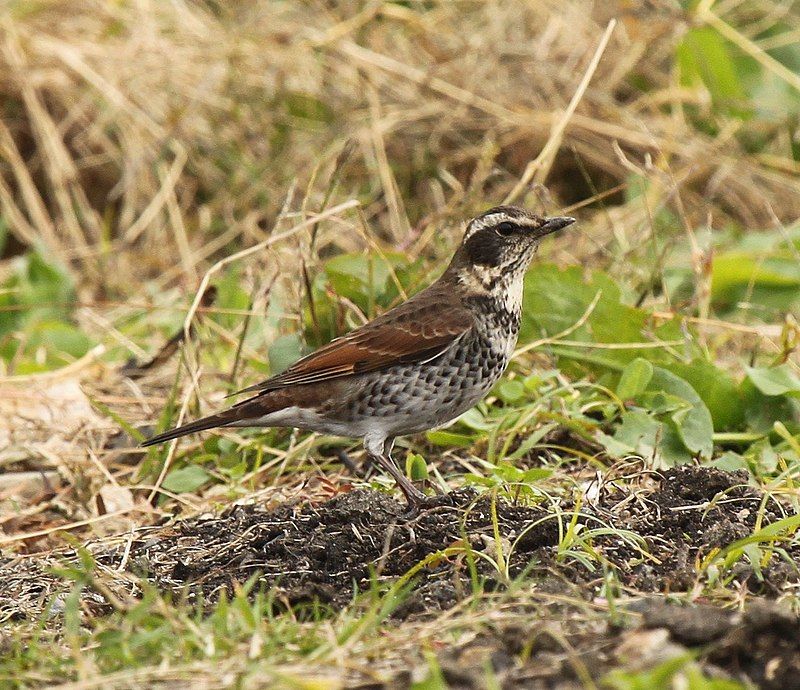
The dusky thrush is a species of bird that belongs to the thrush family. It is native to eastern areas of central Siberia, all the way to Kamchatka, but it migrates further south during the winter season.
The dusky thrush is closely related to Naumann’s thrush, which is native to the more southerly regions. In fact, these two species have been considered the same species in the past due to their close relationship.
The dusky thrush is a medium-sized bird with a mainly greyish-brown color, and it is distinct from the more colorful Naumann’s thrush. This bird mostly eats insects, worms, and berries, and it can be found in forests and wooded areas.
It is also known to form large flocks during migration.
| Kingdom | Animalia |
| Phylum | Chordata |
| Class | Aves |
| Order | Passeriformes |
| Family | Turdidae |
| Genus | Turdus |
| Species | T. eunomus |
19. Daurian Redstart
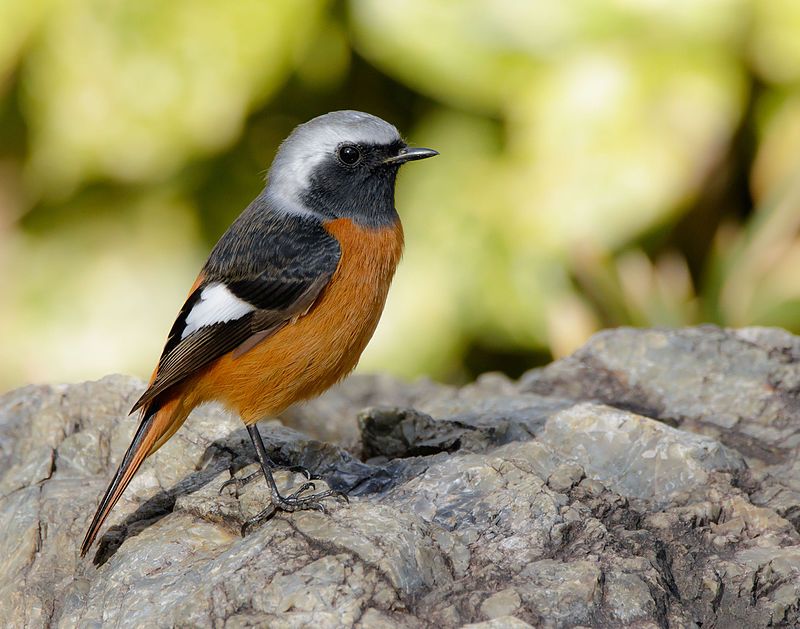
The Daurian redstart is a type of bird found in temperate Asia. It is a passerine, which means it is a type of perching bird that is characterized by its strong, pointed beak and the ability to hop from branch to branch.
The Daurian redstart is small in size, with a distinctive reddish-orange color on its wings and tail. It was first described by the Russian naturalist Peter Simon Pallas in 1776.
Pallas was one of the most important naturalists of his era, and his description of the Daurian redstart was one of the first accurate descriptions of the species.
Since then, the Daurian redstart has been studied extensively and is now widely recognized as one of the most popular passerine birds in temperate Asia.
| Kingdom | Animalia |
| Phylum | Chordata |
| Class | Aves |
| Order | Passeriformes |
| Family | Muscicapidae |
| Genus | Phoenicurus |
| Species | P. auroreus |
Conclusion
Saitama is an excellent place for bird watching and has a variety of birds to be seen. From the common sparrows to rare species, Saitama has something for everyone.
With its many natural parks and bird sanctuaries, it provides a great opportunity for bird enthusiasts to observe and appreciate these beautiful creatures in their natural habitat.